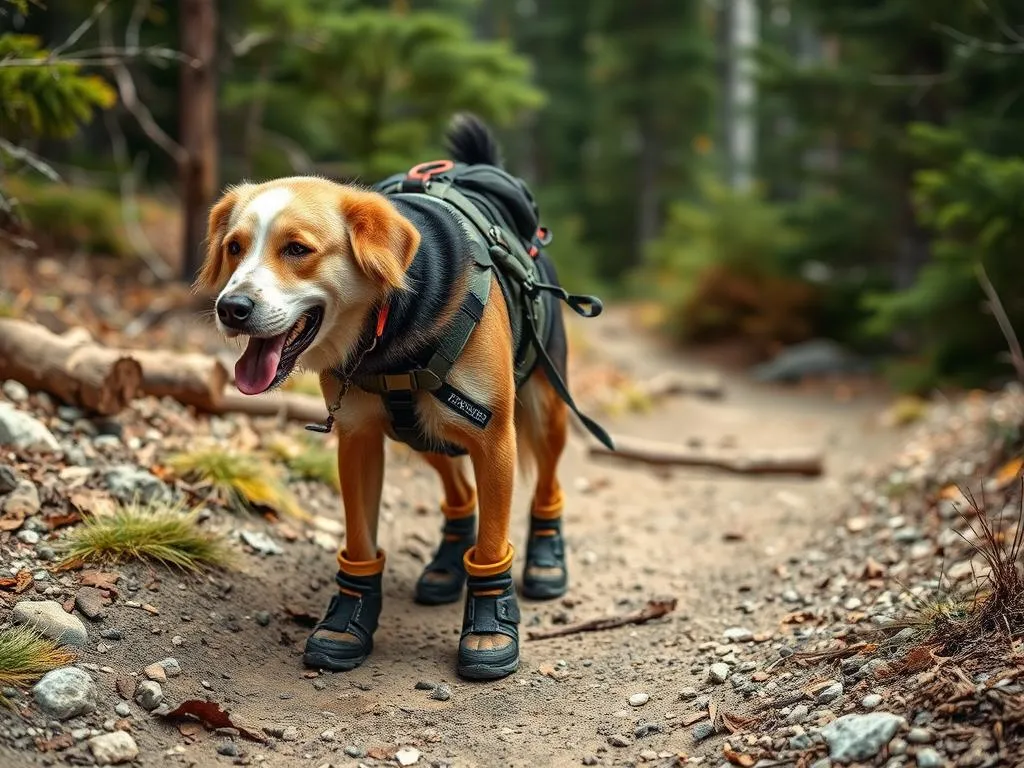
Introduction
Hiking with our canine companions can be one of the most rewarding experiences for both pet and owner. The great outdoors offers endless opportunities for exploration, exercise, and bonding. However, just like humans, dogs can face challenges on rugged trails, making it essential to consider their safety and comfort. One protective measure that has gained popularity among dog owners is the use of dog boots. But should dogs wear dog boots while hiking? In this article, we will delve into the benefits, drawbacks, and considerations of using dog boots, helping you make an informed decision for your furry friend.
Understanding Dog Boots
Purpose of Dog Boots
The primary purpose of dog boots is to provide protection. Dogs’ paws are susceptible to injuries from rough terrain, sharp objects, and extreme weather conditions. Whether you’re hiking on rocky trails, through snowy landscapes, or in hot weather, boots can act as a shield, preventing cuts and abrasions. Additionally, they can help protect against hot pavement or icy surfaces that can harm sensitive paw pads.
Types of Dog Boots
When it comes to dog boots, there are various options available to suit different needs and conditions.
- Material Variations: Dog boots can be made from rubber, fabric, or waterproof materials. Rubber boots are great for wet conditions, while fabric options can provide breathability.
- Different Styles: High-top boots offer more ankle support, which can be beneficial for dogs hiking on uneven terrain, while low-top styles are easier for dogs to wear and remove.
- Size and Fit Considerations: It’s crucial to find the right size for your dog to ensure comfort. A proper fit will prevent rubbing and slipping, allowing your dog to move freely.
Benefits of Using Dog Boots While Hiking
Injury Prevention
One of the most significant advantages of using dog boots is injury prevention. Hiking can expose dogs to various hazards, from sharp rocks to thorny bushes. Boots can significantly reduce the risk of cuts and scrapes, allowing your dog to enjoy the hike without the fear of injury. Additionally, they protect sensitive paw pads from extreme temperatures, whether hot or cold.
Enhanced Traction
Hiking trails can be slippery, especially in wet or rocky conditions. Dog boots can improve your dog’s grip, providing enhanced traction on uneven surfaces. This added stability can help prevent slips and falls, making your hiking experience safer for both you and your dog.
Comfort and Protection
Long hikes can be taxing on a dog’s paws. With the right dog boots, your furry friend can experience increased comfort, preventing paw fatigue. In snowy conditions, boots can protect against snowballs forming between the toes, while also providing insulation against the cold.
Reducing Allergic Reactions
Some dogs may be prone to allergies from environmental factors like pollen, chemicals, or rough surfaces. Wearing dog boots can create a barrier, reducing the chances of allergic reactions while hiking.
Drawbacks of Using Dog Boots
Adjustment Period
While there are many benefits to using dog boots, it’s important to note that dogs may require an adjustment period. Not all dogs are accustomed to wearing boots, and it may take some time for them to acclimate. Training tips include gradually introducing the boots at home and rewarding your dog for wearing them.
Potential for Discomfort
Not all dog boots are created equal, and improper sizing can lead to discomfort. Signs of discomfort include limping, excessive paw licking, or trying to remove the boots. It’s essential to monitor your dog closely and ensure that the boots fit well and do not cause irritation.
Cost Considerations
Quality dog boots can come with a price tag, and while they are a long-term investment, it’s important to consider your budget. Prices can vary widely, and investing in a reputable brand can save you money in the long run by reducing the likelihood of needing replacements.
When to Use Dog Boots
Terrain Considerations
The type of terrain you plan to hike can determine whether dog boots are necessary. Rocky trails, muddy paths, and snowy landscapes are all conditions where boots can provide significant benefits. However, on well-maintained trails or soft grass, boots may be less necessary.
Weather Conditions
Weather plays a crucial role in deciding to use dog boots. In extreme heat, boots can protect against scorching pavement, while in frigid temperatures, they can shield against ice and snow. Rainy conditions may also warrant the use of waterproof boots to keep your dog’s paws dry.
Dog’s Health and Breed Factors
Certain breeds may benefit more from dog boots than others. For instance, senior dogs or those with pre-existing conditions may require extra protection. Additionally, breeds with sensitive paws or those that are not used to rough terrains may find boots particularly helpful.
How to Choose the Right Dog Boots
Measuring Your Dog’s Paws
Choosing the right dog boots begins with accurate measurements. Here’s a simple step-by-step guide to measure your dog’s paws:
- Gather Materials: You will need a piece of paper, a pencil, and a ruler.
- Trace Your Dog’s Paw: Place the paper on a flat surface and have your dog stand on it. Trace around the paw, ensuring you include the width and length.
- Measure the Tracing: Use the ruler to measure the longest and widest parts of the paw tracing.
- Consult Size Charts: Most brands provide size charts based on measurements, so refer to these when selecting boots.
Evaluating Quality and Durability
When investing in dog boots, consider the quality and durability of the materials. Look for boots made from sturdy, breathable materials that can withstand various terrains. Reviews and recommendations from other dog owners can also provide insight into which brands are reliable.
Trying Before You Buy
Whenever possible, it’s important to try boots on your dog before making a purchase. Check for proper fit and comfort, and pay attention to how your dog reacts. Many reputable brands offer return policies, so you can feel confident in your purchase.
Training Your Dog to Wear Boots
Introducing Boots Gradually
Training your dog to wear dog boots should be a gradual process. Start by letting your dog sniff and explore the boots before attempting to put them on. Use positive reinforcement techniques, such as treats and praise, to create a positive association with the boots.
Monitoring Your Dog’s Comfort
Once your dog is wearing the boots, monitor them closely for signs of comfort or discomfort. Look for signs such as paw lifting, excessive chewing, or whining. If your dog appears uncomfortable, consider adjusting the fit or trying a different style.
Real-Life Experiences: Testimonials and Case Studies
Positive Experiences
Many dog owners have shared their success stories of using dog boots while hiking. One owner noted a significant reduction in paw injuries after introducing boots, allowing their dog to hike longer distances without discomfort. Others reported that their dogs were more confident on slippery trails, thanks to the enhanced traction provided by the boots.
Challenges Faced
However, not all experiences are positive. Some dog owners reported challenges in finding the right fit or getting their dogs accustomed to the boots. Solutions included gradually introducing the boots at home and trying different brands until they found the perfect match for their dog.
Conclusion
In summary, the decision of whether dogs should wear dog boots while hiking depends on various factors, including the terrain, weather conditions, and your dog’s individual needs. While there are numerous benefits to using boots, including injury prevention and increased comfort, it’s essential to consider potential drawbacks such as adjustment periods and costs. By carefully assessing your dog’s requirements and taking the time to find quality boots, you can enhance your hiking adventures together. Ultimately, the goal is to ensure that your furry friend enjoys the experience just as much as you do.
FAQ Section
-
How do I know if my dog needs boots?
Look for signs of discomfort on hikes, such as limping or frequent paw licking. If you hike on rough terrain or in extreme weather, boots may be beneficial. -
Can all dogs wear boots?
Most dogs can wear boots, but some may require extra training to get used to them. Always consult with your veterinarian if your dog has pre-existing conditions. -
Are dog boots expensive?
Prices vary widely, but investing in quality boots can save money in the long run by reducing the need for replacements. -
How do I clean dog boots?
Most dog boots can be wiped clean with a damp cloth. Check the manufacturer’s instructions for specific care guidelines.
By understanding the various aspects of dog boots and their impact on hiking, you can make informed decisions that prioritize your dog’s safety and well-being.









